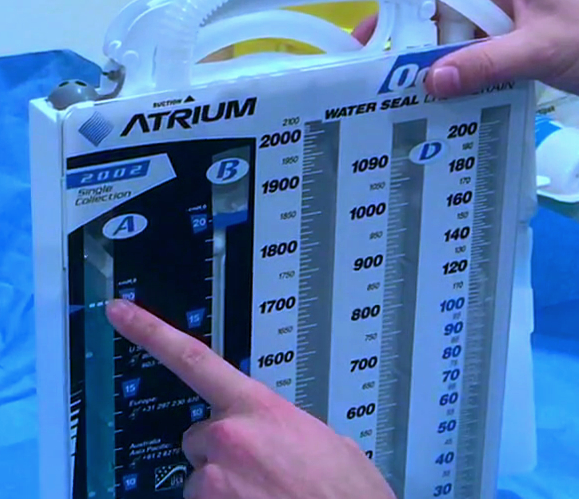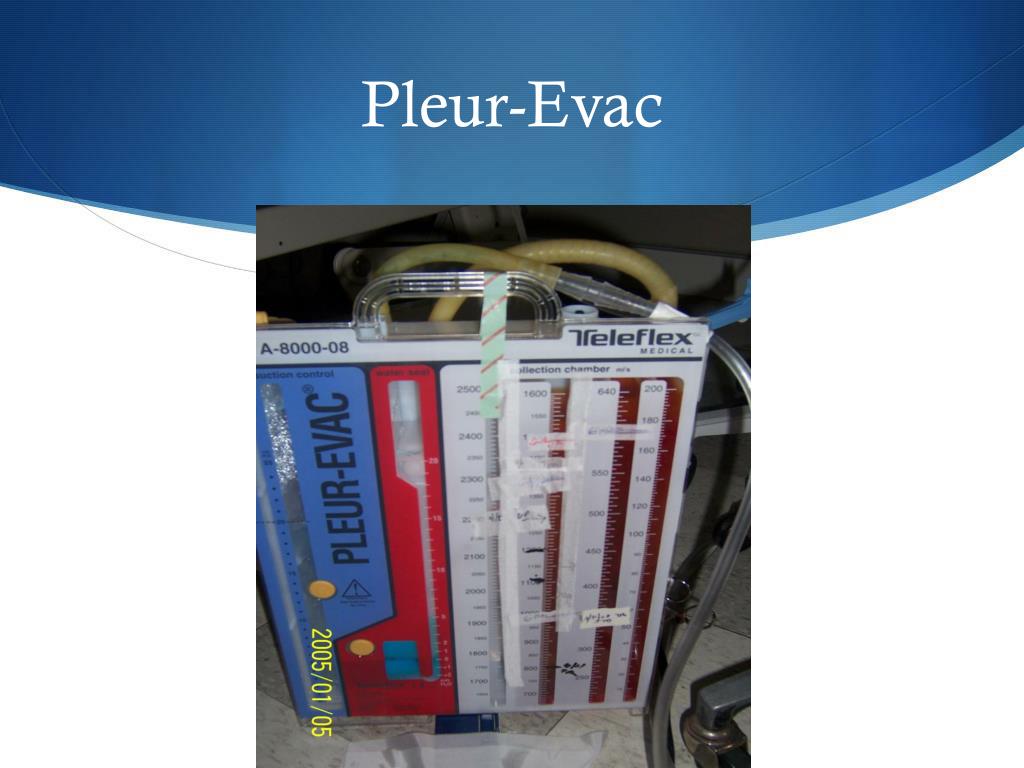

In general, clamping of chest tubes is contraindicated.Except for the exit vent, an airtight system is required to assist in maintaining negative pressure in the pleura and to prevent air entrapment in the pleural space.Absence of fluctuations suggests obstruction of the drainage system from clots, contact with lung tissue, kinks, loss of subatmospheric pressure from fluid-filled dependent loops, or complete reexpansion of the lung. Tidaling, fluctuations that occur with inspiration and expiration, provides a continuous manometer of the pressure changes in the pleural space and indicates overall respiratory effort.B, Emerson disposable chest drain system.
#Pleur evac atrium portable#
24-2) for patients with large bronchopleural air leaks because they are high-volume, low-resistance, portable suction devices capable of handling high airflow rates.


These systems are safe if accidentally tipped. This one-way valve feature allows the system to be used in the vertical or horizontal position without loss of the seal. A valve opens on expiration and allows patient air to exit, then closes to prevent atmospheric air from entering during inspiration.

Have self-sealing ports or collection tubes for aspiration of drainage samples and removal of excess chamber fluid levels. May have replaceable collection chambers, which can be removed when filled and replaced with a new one without changing the entire unit.
#Pleur evac atrium manual#
In addition, automatic and manual pressure relief valves vent excessive negative pressure, such as may occur during deep inspiration or with milking of the chest tube. (From Luce JM, Tyler ML, Pierson DJ: Intensive respiratory care, Philadelphia, 1984, Saunders.)Īre equipped with a positive-pressure relief valve used to prevent a tension pneumothorax if the suction tubing becomes accidentally occluded or if the suction source fails.
#Pleur evac atrium free#
Greater pressure within the chest than within the system this requirement is accomplished by keeping the drainage unit at least 1 foot below the chest tube insertion site and the tubing free of dependent loops and obstructions, 1, 11, 13, 26 which prevents siphoning of the contents back into the pleural cavity 26ĭifferences in flow rates and in accuracy of delivered negative pressures noted in chest drainage systems that were not likely to be clinically important 6, 7 Gravity, suction, or both to restore negative pressure and remove air, fluid, and blood from the pleural space or the mediastinumĪ one-way mechanism created by a water-seal that permits air and fluid to be removed and prevents backflow into the chest Dry suction with a traditional water-seal dry suction with a one-way valve wet suction with a traditional water-seal and one-bottle, two-bottle, three-bottle, and four-bottle setups


 0 kommentar(er)
0 kommentar(er)
